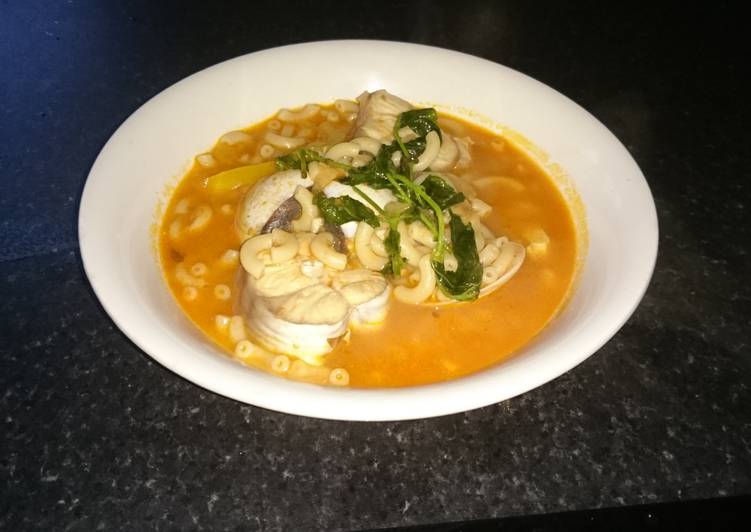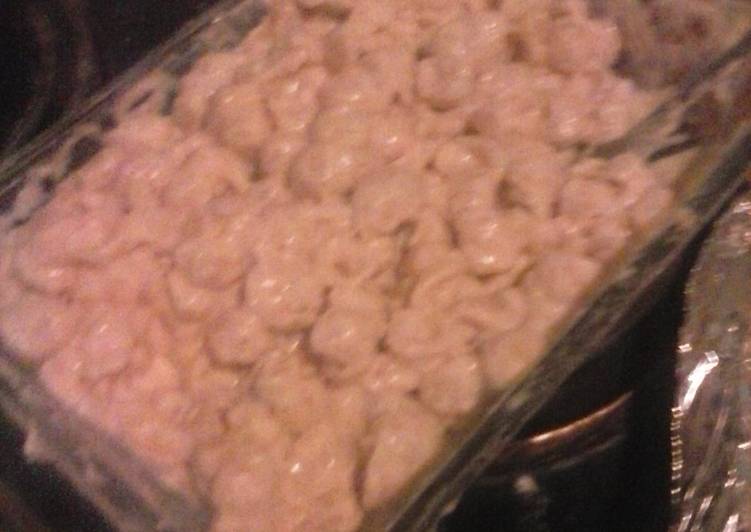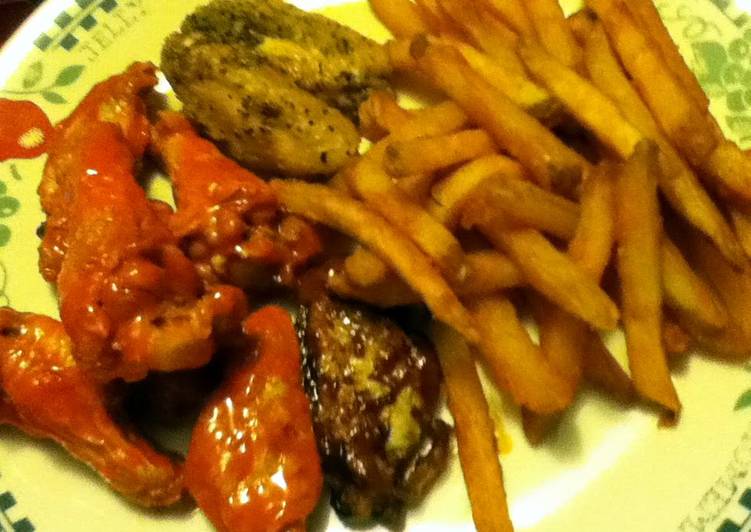
Hey everyone, it is John, welcome to my recipe page. Today, I will show you a way to prepare a special dish, portuguese fish pasta. One of my favorites. For mine, I am going to make it a bit tasty. This will be really delicious.
Wash the clams under running water and set aside. Put the shrimp in a saucepan with water seasoned with some salt and a small onion. Bring to a boil over high heat. 'Massada de Marisco' is a popular Portuguese style seafood pasta dish.
Portuguese Fish Pasta is one of the most well liked of recent trending meals in the world. It’s appreciated by millions every day. It’s easy, it’s quick, it tastes yummy. Portuguese Fish Pasta is something which I’ve loved my entire life. They’re nice and they look wonderful.
To get started with this recipe, we have to first prepare a few components. You can cook portuguese fish pasta using 18 ingredients and 10 steps. Here is how you can achieve it.
The ingredients needed to make Portuguese Fish Pasta:
- Make ready 1 large onion, chopped
- Take 3 garlic cloves, chopped
- Prepare salt
- Prepare 1 bay leaf
- Prepare 1 1/2 can chopped tomatoes
- Get water
- Take 1 fish cube
- Get 2 tbsp olive oil, extra virgin
- Make ready 300 ml fish stock
- Make ready 300 grams pasta
- Prepare 250 grams fresh clams
- Prepare 200 grams raw prawns
- Take 1 bunch chopped parsley
- Get dried chilis
- Take 1/2 pepper, chopped
- Make ready 1 bunch fresh mint, whole
- Take 300 grams any white fish, i.e. cod
- Prepare 1 tbsp tomato paste
Pour the rest of the tomato sauce over all and then top with minced parsley. Heat oil in cast iron skillet. Portuguese Clam Stew Adapted from The Provincetown Seafood Cookbook this classic Portuguese seafood stew features fresh littleneck clams, clam broth, tomatoes, chorizo sausage, white wine, onions, peppers, garlic and fresh herbs and spices. Here is a list of the top Portuguese dishes that seafood lovers must try while visiting Portugal.
Steps to make Portuguese Fish Pasta:
- You have to make the fish stock first, you can make it 24 hours in advance and set in fridge until needed or freeze it for longer.
- In a pot add the water, the prawns, a few dried chili's and a few onion skins. Bring to the boil and cook until the prawns have turned pink normally 4-5 at the most. Take of the heat and remove the prawns from the pot set aside. Remove the onion peels and discard.
- When the prawns have cooled down enough to handle. Peel the skin and heads and add all the discarded prawn peel, heads and chili's into a blitzer with half of the water. Blitz together very well. Set aside the now peeled prawns and the fish liquid to add to the pasta later.
- Heat olive oil in a saucepan, then add the onion and garlic, fry for 3-5 minutes on medium heat until the onion becomes soft.
- Add the can of tomatoes, paste, chopped pepper, bay leaf, salt and parsley and stir. Simmer for another 5-6 minutes, add about 100ml of water and allow to simmer down stirring regularly.
- Add the stock cube and continue to simmer for another few minutes, then add the fish water and bring to boiling point.
- Add the pasta, add more water if required to reach just about half way of the pot and continue to cook for a further 8-10 minutes.
- Then add the fish pieces and clams, and continue to cook for another 5-8 minutes.
- Lastly, add the cooked prawns and the mint to the pot and stir.
- Let it rest for 10 minutes before serving.
This Portuguese seafood stew recipe is a traditional Portuguese dish, easy to prepare and with a pleasant sea flavor. Seafood with white beans Seafood pasta (Portuguese style) Spaghetti with shrimps and seafood delights Valenciana rice Shrimp rissoles Shrimp "pataniscas. Beyond Bacalhau or Portuguese codfish and sardines, octopus or polvo is another popular Portuguese seafood dish loved by all. Polvo à la lagareiro is a famous octopus dish that you will find across the country. Lagareiro is a popular way of cooking seafood which includes using generous amounts of Portuguese olive oil.
So that’s going to wrap it up with this exceptional food portuguese fish pasta recipe. Thank you very much for your time. I’m sure that you can make this at home. There’s gonna be more interesting food in home recipes coming up. Remember to save this page on your browser, and share it to your loved ones, colleague and friends. Thanks again for reading. Go on get cooking!

